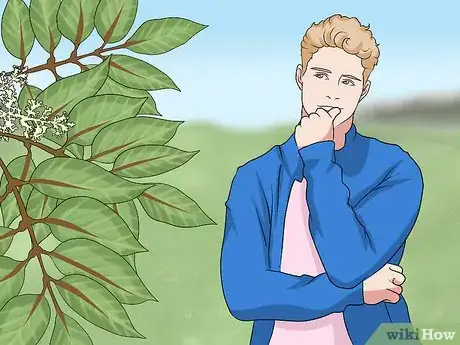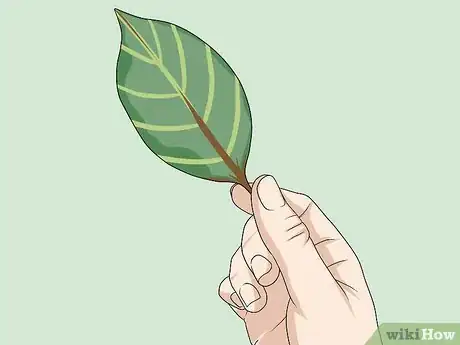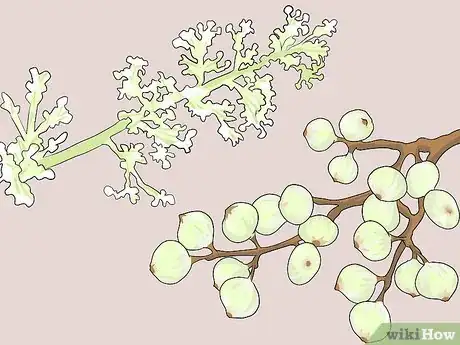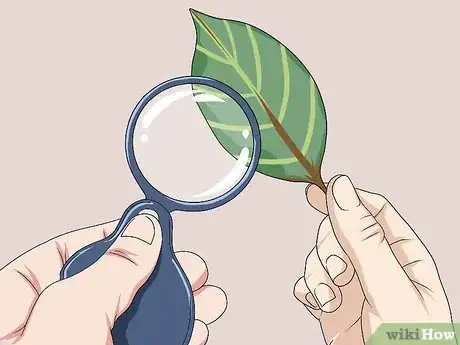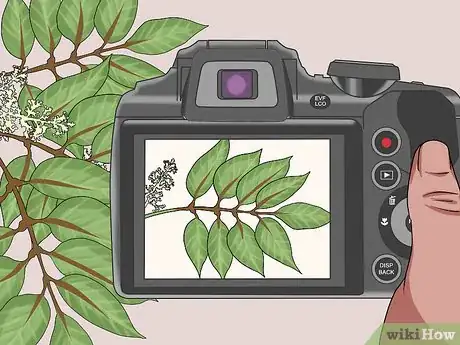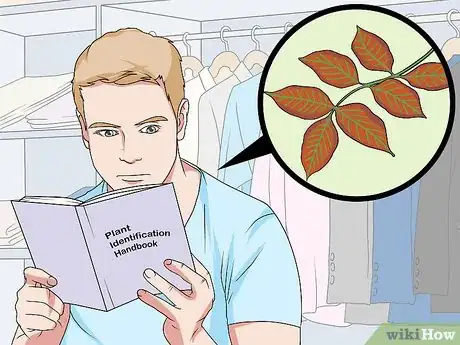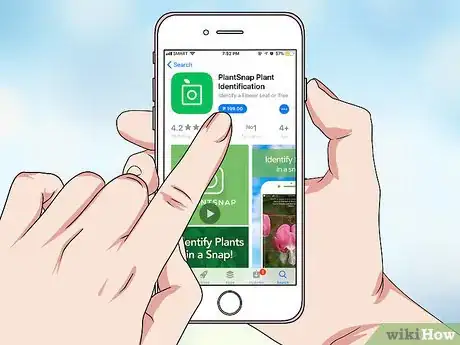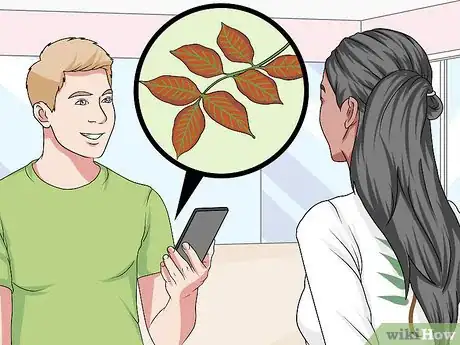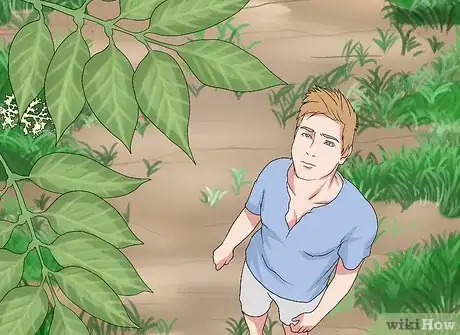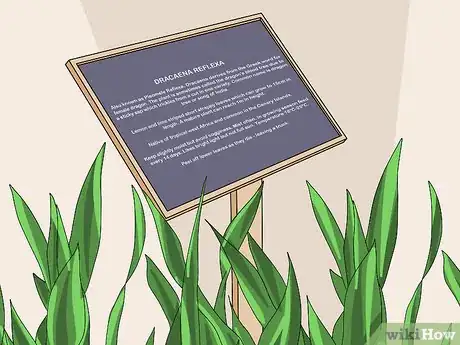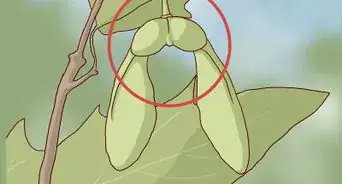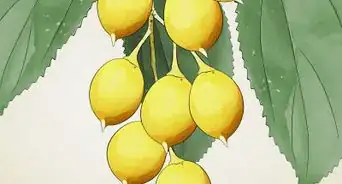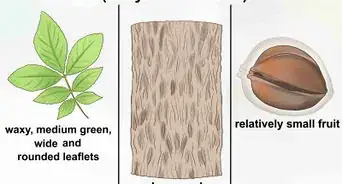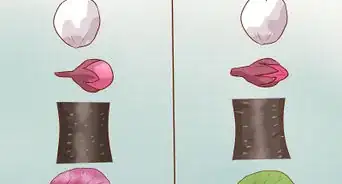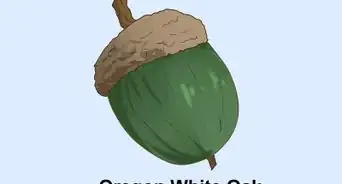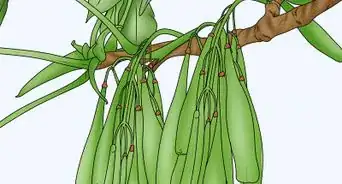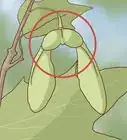This article was co-authored by Michael Simpson, PhD. Dr. Michael Simpson (Mike) is a Registered Professional Biologist in British Columbia, Canada. He has over 20 years of experience in ecology research and professional practice in Britain and North America, with an emphasis on plants and biological diversity. Mike also specializes in science communication and providing education and technical support for ecology projects. Mike received a BSc with honors in Ecology and an MA in Society, Science, and Nature from The University of Lancaster in England as well as a Ph.D. from the University of Alberta. He has worked in British, North American, and South American ecosystems, and with First Nations communities, non-profits, government, academia, and industry.
There are 12 references cited in this article, which can be found at the bottom of the page.
This article has been viewed 29,134 times.
With so many different kinds of plants out there, telling them apart can seem like an impossible task. But you don't have to have a degree in botany to start putting names to the vegetation you come across. Learning to recognize various species begins with studying the plant's unique physical features carefully and recording what you see. You can then call upon other helpful resources, like a plant identification guide or the expertise of a local wildlife specialist, to make a positive ID and add to your knowledge of the natural world.
Steps
Examining Unknown Plants
-
1Take your environment into consideration. If you spot a plant outdoors and don't have the first clue as to what it is, start identifying it by scanning your surroundings. In particular, consider the overall climate, the conditions of the terrain, and any nearby water sources. A quick glance should be able to tell you whether you're looking at a cattail reed or a cactus.[1]
- Mosses, for instance, only grow on cool, moist surfaces, whereas woody shrubs tend to spring up in places where precipitation is scarce.
- Your location may also help point to the identity of larger clusters of trees making up wooded areas. You're more likely to find coniferous "evergreens" in cold, temperate climates, while the majority of trees in warm, humid regions are deciduous.[2]
-
2Study the plant's features carefully. Whenever you come across a species you've never seen before, stop and take note. Look over each of the individual parts, like the stems, leaves, and flowers. Most plants can be grouped and differentiated according to the appearance of these structures.[3]
- As a general rule, you should always start by examining the plant's stem and branching pattern, then enlarge your focus to the leaves, flowers, shoots, and other outlying structures.
- Some of the broadest plant classifications include woody plants, herbaceous plants, aquatic plants, wildflowers, grasses, and lichens.
Advertisement -
3Pay particular attention to flowers and fruit. Note the appearance of any bulbs, blossoms, or berries growing on the plant. While it's possible to wager a guess about what family a given plant belongs to based on its physical characteristics, highlighting its reproductive structures will enable you to pinpoint its exact species with a little research.[4]
- Many plants that fall within the same basic classification are distinguishable only by their flowers and fruit.
- To identify plants, look at their flowers. Some field guides separate species by flower color.
- But this approach may not be suitable for plants that have flowers that vary in color or are not flowering when you find them.
- In such a situation, you can look at other features. See whether the plant is short, tall, erect, spreading, or climbing. Also, see the shape and arrangement of flowers and leaves.
-
4Use viewing aids to take a closer look. A magnifying glass will allow you to zoom in and analyze a plant's features in more vivid detail. Similarly, you may require a pair of binoculars or a telescopic lens when you want to inspect a particular specimen from a distance. Without these tools, you'll be stuck doing a lot of guesswork.[5]
- A ruler or tape measure can also come in handy for comparing the size of like species.
- Get in the habit of carrying a few pieces of equipment around with you in your car or book bag so you'll be ready at any time.
-
5Take pictures of the plant. Pull out your phone and get a few photos of the plant you want to identify. That way, you'll be able to review the image later on and use the clues you see there to narrow down the possibilities. Focus in on each of the plant's main parts individually and shoot it from multiple angles to give yourself more material to make a positive match.
- Consider investing in a quality standalone camera. Top-of-the-line models tend to boast more powerful photographic capabilities, and may also come with bonus accessories like interchangeable lenses, a high-capacity memory card, and a strap for portability.
- If all else fails, you can show your pictures to a wildlife expert or upload them to a plant ID app to get some outside assistance.
-
6Write down the plant's key features. Record each trait in your own words in a notebook or a digital note on your device. Be sure to make mention of attributes like size, shape, color, and texture, as well as any unique patterns or other distinguishing marks. In order to learn to identify plants on your own, you'll need to hone your use of descriptive language to be as precise as possible.
- Photos can be useful for reference, but they won't get you very far when you're looking up mystery plants based on a rough verbal description.
Utilizing Various Identification Resources
-
1Flip through a plant identification handbook at the library or bookstore. Illustrated field manuals can often be found in the outdoor activities section. These publications are the naturalist's time-honored method of solving the mysteries of botanical life. Within their pages you'll find detailed full-color images, scientific and common names, and details about the lifespan and reproductive habits of major plant species.[6]
- Plant identification handbooks are most often broken up by state or territory, making them even more accessible for amateur enthusiasts.
- A printed guide can provide answers instantly when you're in the field, or serve as a reliable reference when you need to look something up at home.
-
2Download a plant identification app to stay ready in the field. Programs like Blossom and PlantSnap make it possible for smartphone users to get a readout on unfamiliar plants in a pinch. Once you get the app loaded, it's as simple as photographing the plant in question and waiting for the results. The sophisticated software will dig through an extensive database of physical features to find the closest match.[7]
- In the Flowerchecker app there are real botanists who will identify your plant.
- Some apps like Plantifier and Leafsnap even include realtime support with qualified plant experts analyzing photos as they're submitted.[8]
- Due to the purely visual nature of their identification process, these apps aren't guaranteed to be accurate in all cases.
- If you do not own a smartphone, you can use service www.plant.id on the computer.
-
3Ask an expert to take advantage of their firsthand experience. Show your notes and any photos you've taken to a botanist, gardening specialist, or respected outdoorsman and see if they can help you discover the identity of a certain plant. People who have spent years studying plants can often pick them out by sight or description. By talking to them, you'll have an opportunity to absorb a little of what they know.[9]
- Assuming you don't have anyone to turn to in your area, you can try taking your questions online to a message board for plant lovers or use FlowerChecker app where the botanists identify your plant.
-
4Run a quick image search to sort through pictures by description. If you find yourself without any other options, try typing the plant's features into a search engine and selecting the “images” tab. You'll be shown an assortment of plants cataloged by the keywords you entered. When you find a photo that looks like the plant you're trying to identify, click on it to pull up more info.[10]
- Be as brief yet specific as possible. A search containing the terms “red,” “serrated,” “leaves,” and “veins” is more likely to uncover the correct species than one that reads “big red bush.”
- You may also have some luck scrolling through image archiving websites like Flickr.
-
5Use Google's Reverse Image Search feature to turn up related photos. Assuming you have pictures of the plant in question but no other leads to go on, you might still be able to get a hit by working in reverse. Pull up Google's main page and click or tap the camera icon beside the search bar. Then, upload a photo of the unknown plant from your device and hit "search." You'll be shown a assortment of images with characteristics similar to the one you're trying to learn more about.[11]
- To maximize your chances of getting a match, select the clearest, highest-resolution shot you have. Ideally, the plant should be the focal point of the picture, with little or no extraneous details in the background that might throw off the identifying algorithm.
- If you get a result that's close but not exact, highlight the picture and click the "search by image" option to pull up others like it.[12]
Learning More About Different Species
-
1Teach yourself to recognize local flora. The next time you're out for a stroll, see how many new plants you can spot. Get a photo and jot down a short description of the most common species, then look up the names to assign to their general characteristics. You can gradually expand your knowledge of regional greenery to include species in neighboring areas and rare seasonal offshoots.
- Before you can rattle off the names of plants growing halfway around the world, you should make an effort to familiarize yourself with those that are found where you live.
- It's also a good idea to brush up on the nicknames of common local plants, as you're more likely to encounter these than their more technical Latin names.[13]
-
2Look for plaques when you're in natural areas. If you're at a national park, arboretum, or wilderness preserve, keep an eye out for small signs displaying the names of prominent plants. These signs will typically include additional contextual information, such as the species' preferred growing conditions and history in the area. They may be just what you need to satisfy your curiosity on the spot.[14]
- Floral factoids are also frequently found on placards along hiking trails and at scenic landmarks.
-
3Take a botany course to receive a formal education on plants. If you're serious about continuing your quest for knowledge, sign up for a class or two at a nearby university or community college. In an academic setting, you'll be able to examine a wide range of specimens up close, follow growth and reproductive cycles, and learn the fundamentals of classification and taxonomy. Guided instruction can lend you a deeper understanding of the biological differences that determine a plant's appearance.[15]
- You may be able to audit classes like introductory botany, horticulture, and principles of gardening if your time or money is limited.
- Some schools offer specialized self-study courses online for as little as $50-100 per unit. Distance learning is perfect for those who are interested in progressing at their own leisure.
Things You'll Need
- Plant identification guidebook
- Plant identification app
- Smartphone or computer with internet access
- Magnifying glass
- Binoculars
- Camera
- Ruler or tape measure
- Notebook
- Pen or pencil
References
- ↑ http://isebindia.com/icpep-5/icpep5-s-3.html
- ↑ https://www.wnps.org/blog/conifers-deciduous-trees/
- ↑ http://store.msuextension.org/publications/agandnaturalresources/mt201304ag.pdf
- ↑ https://www.amnh.org/explore/curriculum-collections/biodiversity-counts/plant-identification/how-to-identify-plants-in-the-field/
- ↑ https://www.amnh.org/explore/curriculum-collections/biodiversity-counts/plant-identification/how-to-identify-plants-in-the-field/
- ↑ https://www.fs.fed.us/wildflowers/features/books/index.shtml
- ↑ http://content.yardmap.org/learn/plant-id-tips/
- ↑ http://www.telegraph.co.uk/gardening/tools-and-accessories/the-best-apps-to-identify-unknown-plants-and-flowers/
- ↑ https://extension.unl.edu/statewide/antelope/Identifying%20Landscape%20Plants.pdf
- ↑ http://www.telegraph.co.uk/gardening/tools-and-accessories/the-best-apps-to-identify-unknown-plants-and-flowers/
- ↑ https://www.pcmag.com/article2/0,2817,2492468,00.asp
- ↑ https://www.google.com/intl/es419/insidesearch/features/images/searchbyimage.html
- ↑ http://content.yardmap.org/learn/plant-id-tips/
- ↑ https://www.nationalgeographic.com/travel/parks/forillon-canada-park/
- ↑ https://extension.learn.usu.edu/browse/gardening/courses/gs-001
